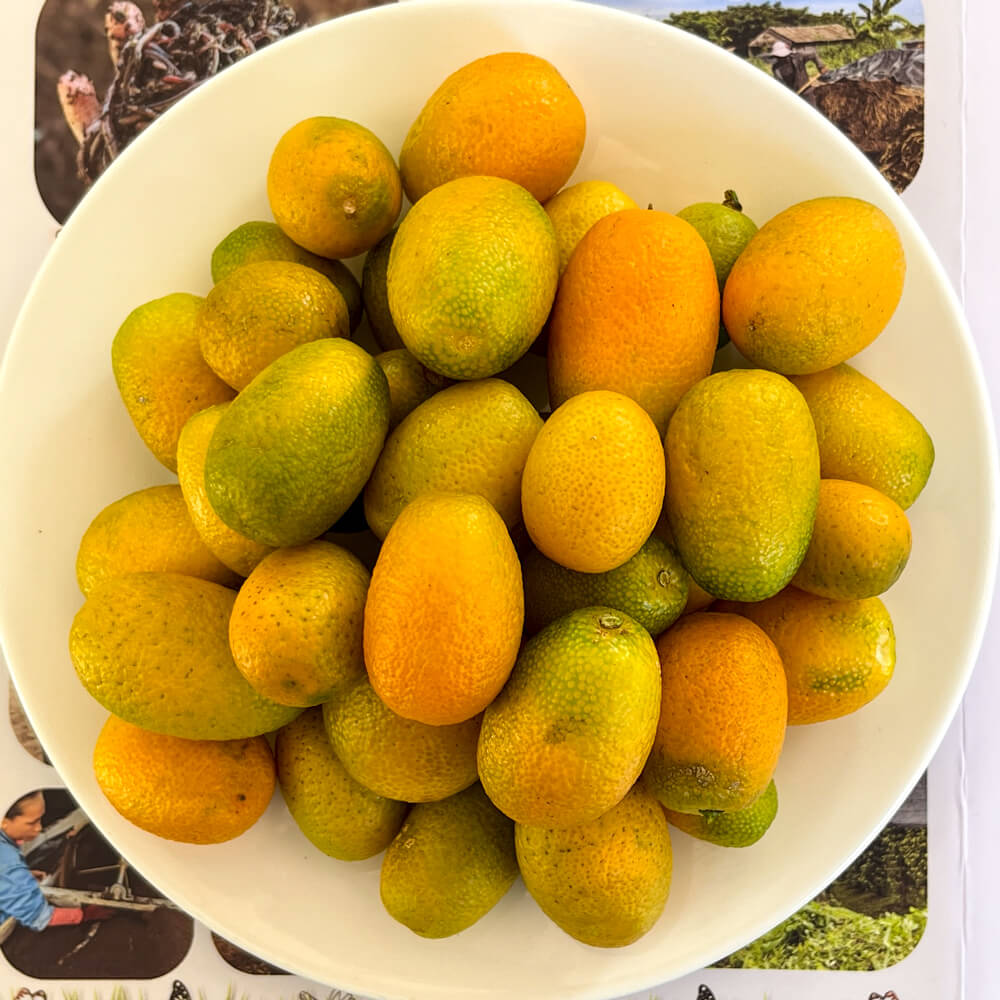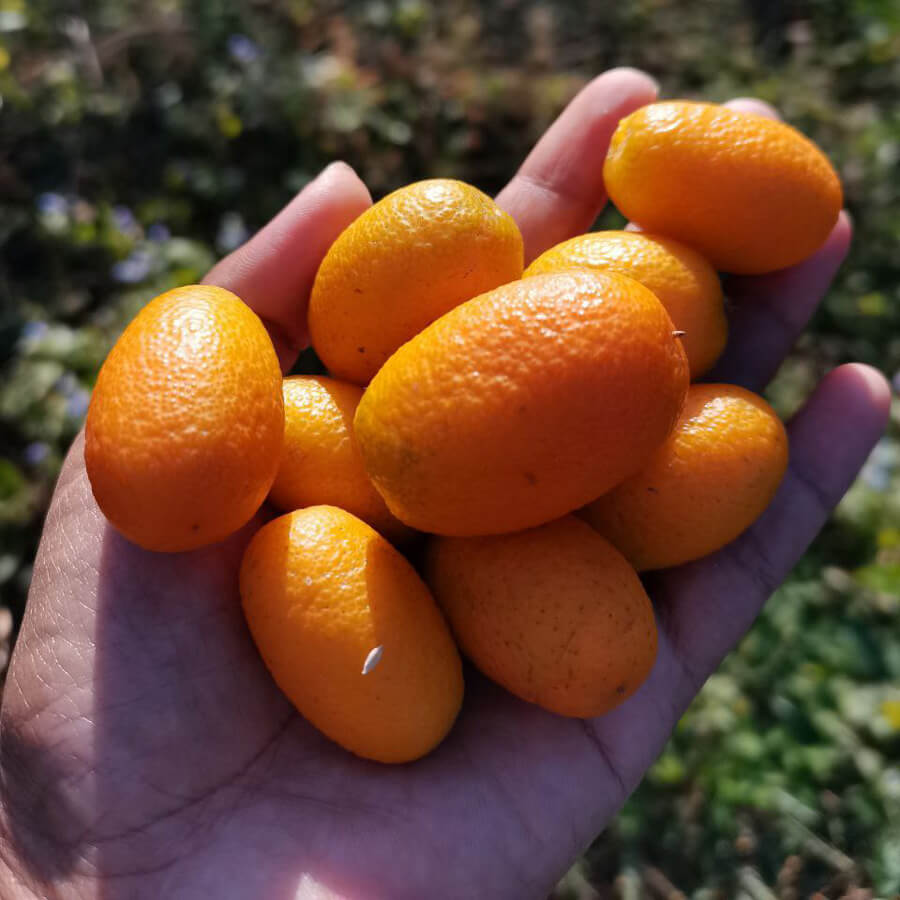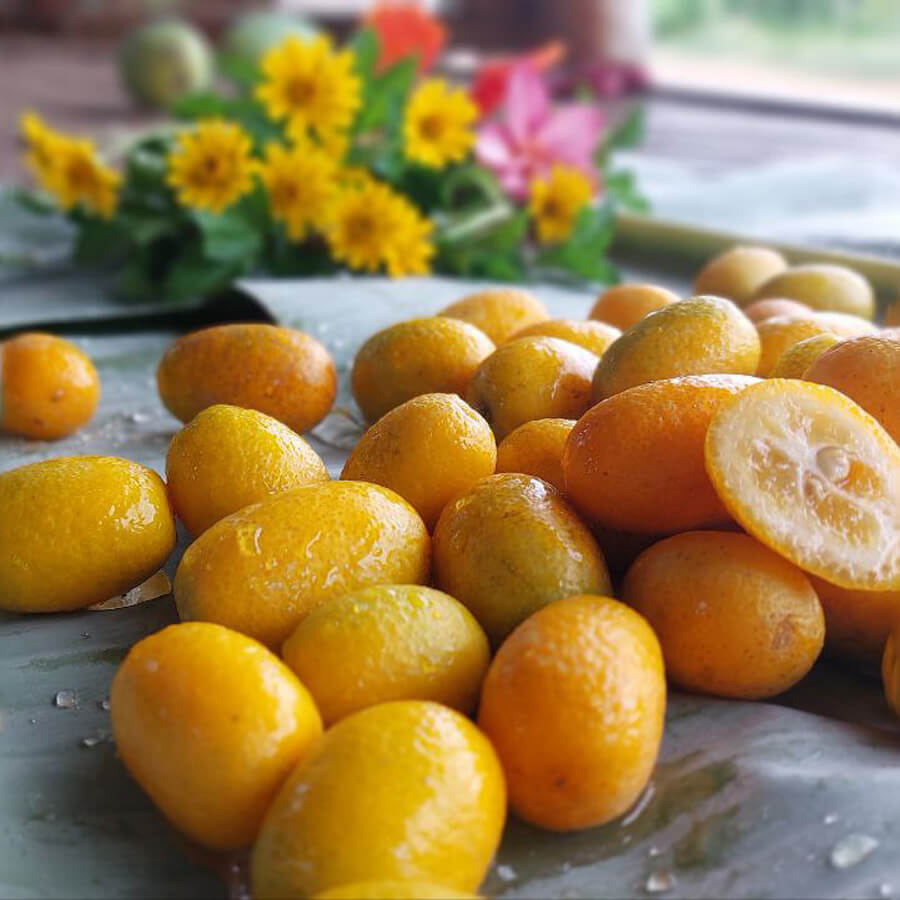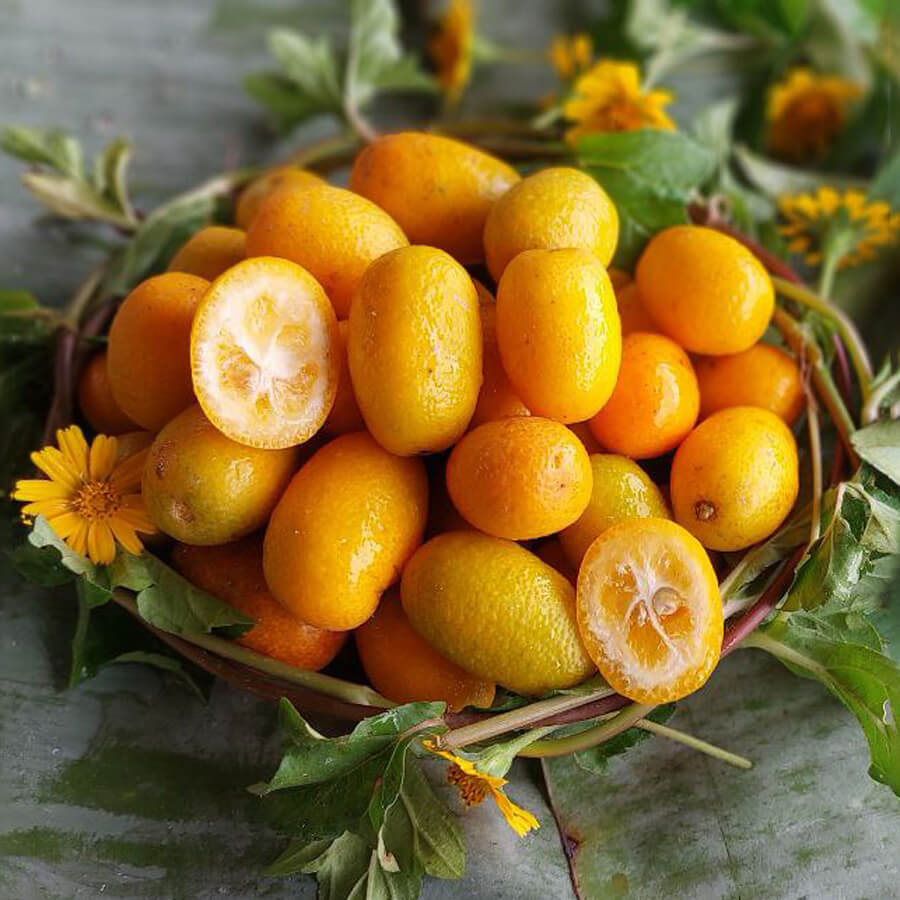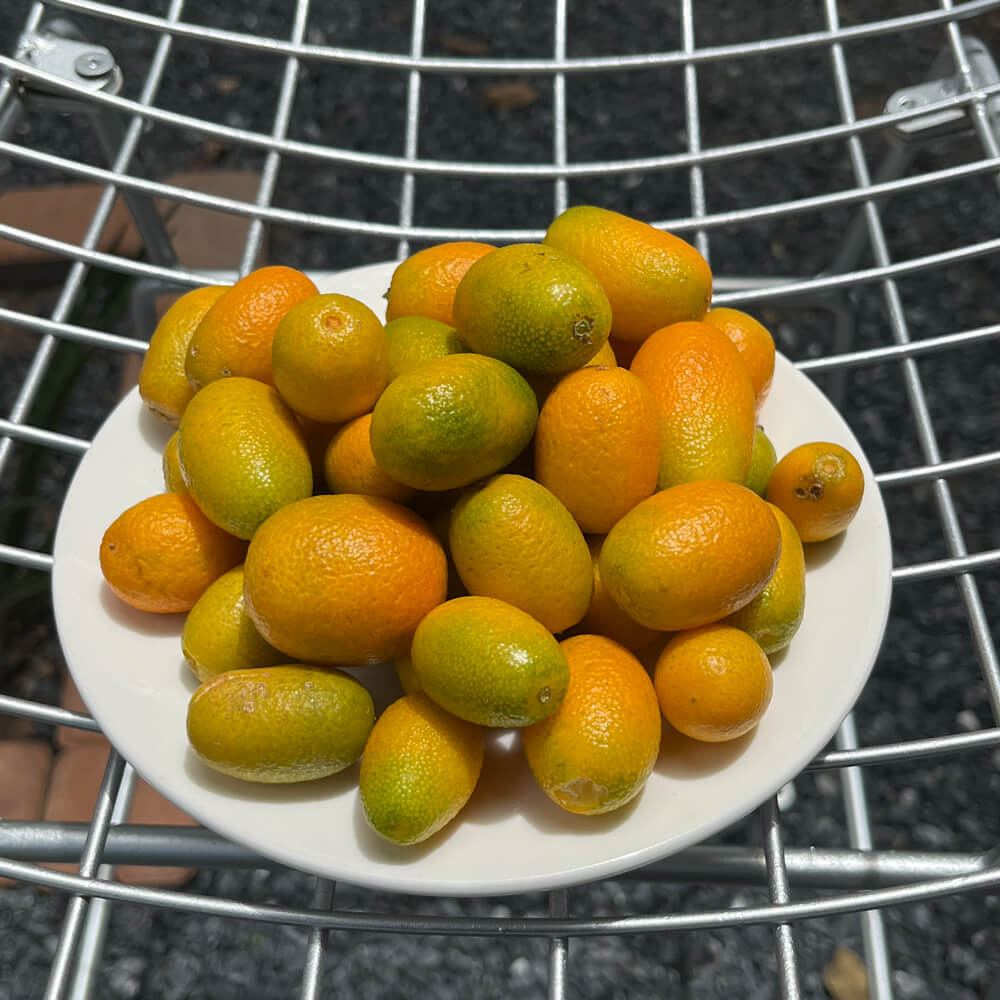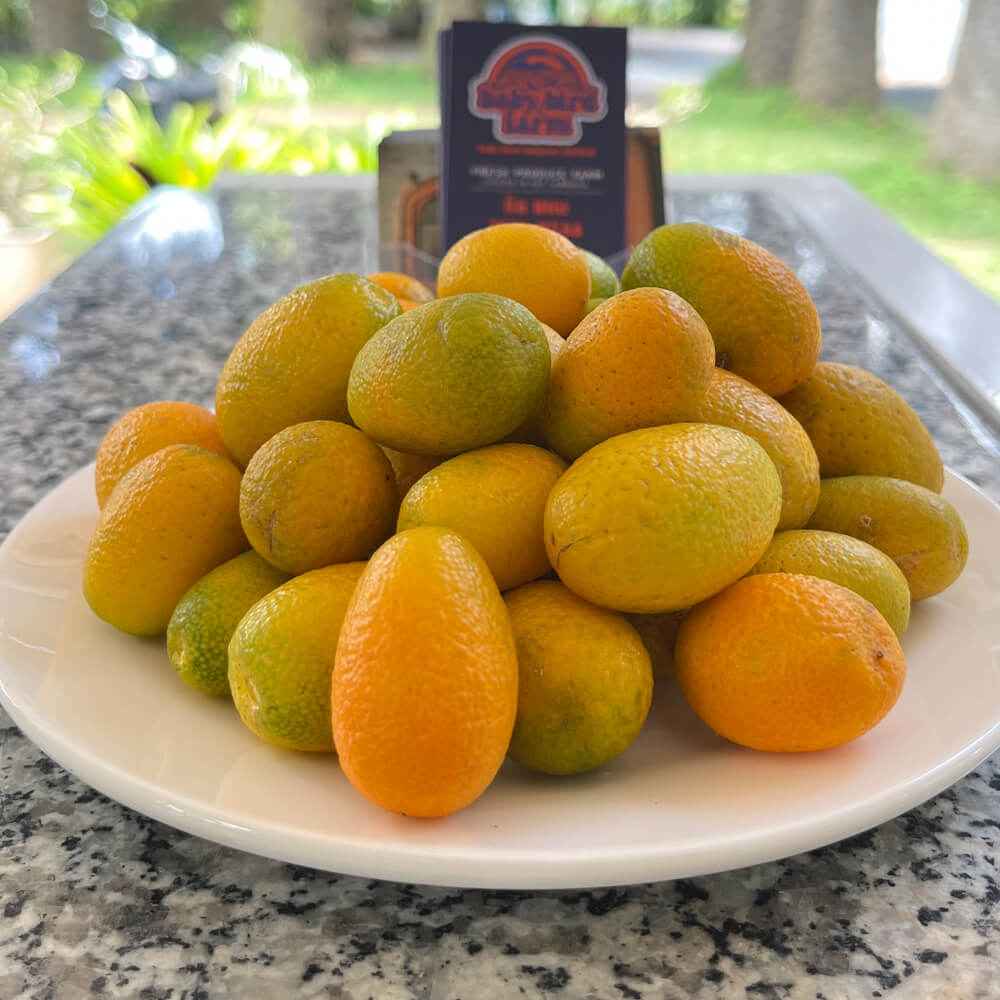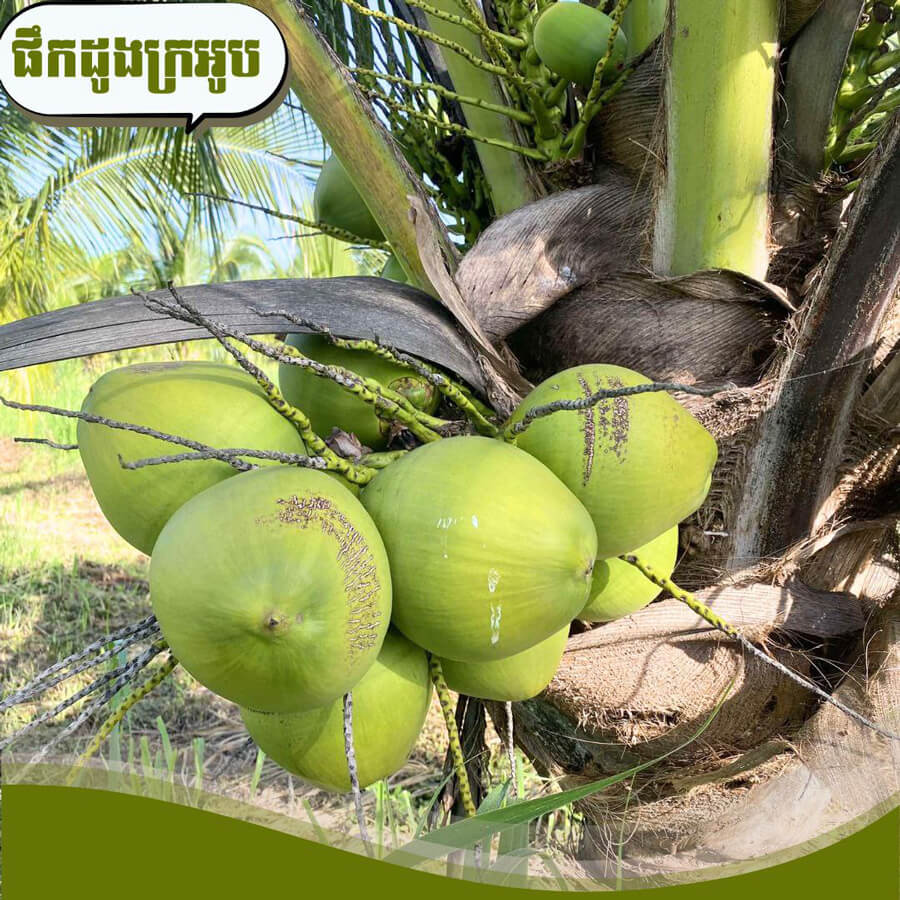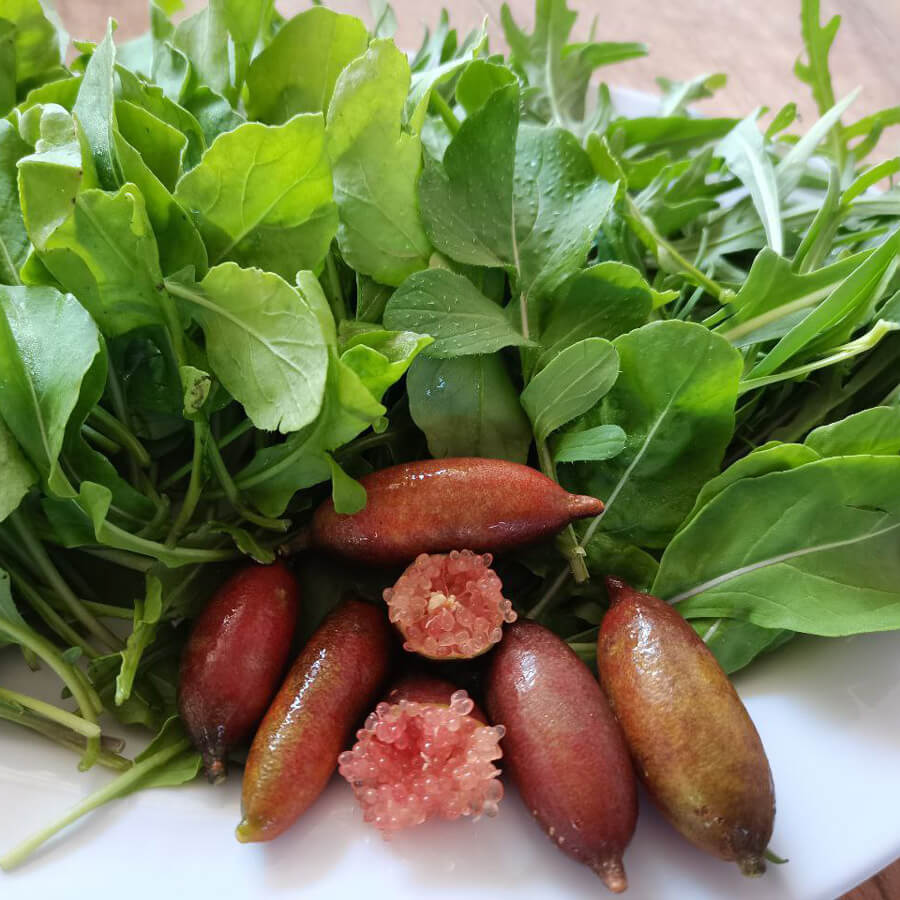In terms of uses, kumquats are incredibly versatile. They can be eaten raw as a snack, often enjoyed by biting directly into the whole fruit, including the peel. Their vibrant flavor makes them perfect for incorporating into salads, salsas, and desserts, or even as a garnish for cocktails and other beverages. Kumquats can also be preserved by making marmalade or jelly, and their zest is sometimes used to add a citrusy kick to dishes or drinks.
The fruit is rich in vitamin C, antioxidants, and dietary fiber, making it a nutritious addition to the diet. Despite its small size, kumquats are packed with nutrients and are low in calories, which makes them a healthy option for snacking. The vitamin C content supports immune health, while the fiber helps with digestion and promotes satiety.
Kumquats are typically grown in subtropical and tropical regions, thriving in warm climates. They are often seen as ornamental plants as well as fruit-bearing ones because of their attractive appearance and fragrant blossoms. While they are not as widely available as other citrus fruits, kumquats can often be found in specialty grocery stores and farmers’ markets during their peak season in the winter and early spring.
In summary, kumquats are small, tangy citrus fruits that offer a unique combination of sweetness from their peel and tartness from their flesh. They are delicious when eaten raw, but also lend themselves well to culinary creativity, from marmalades to salads. Rich in nutrients and low in calories, kumquats are a flavorful and healthy addition to any diet.

